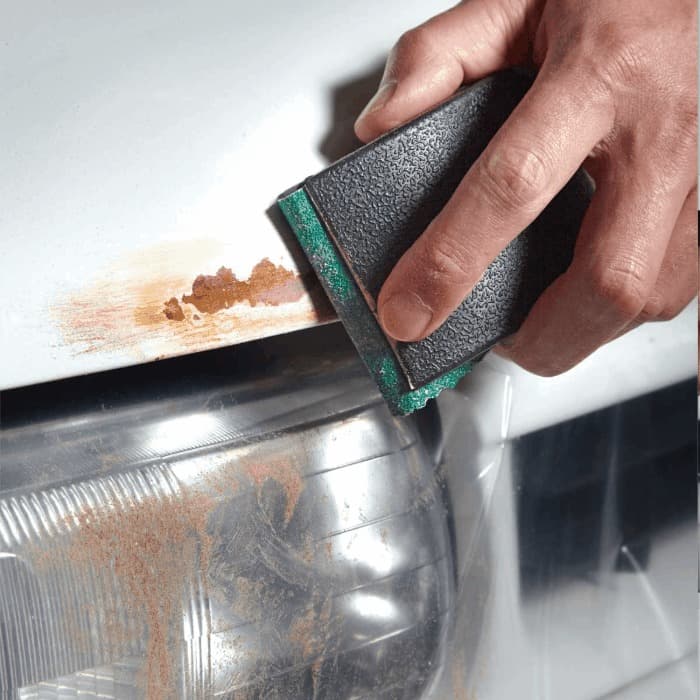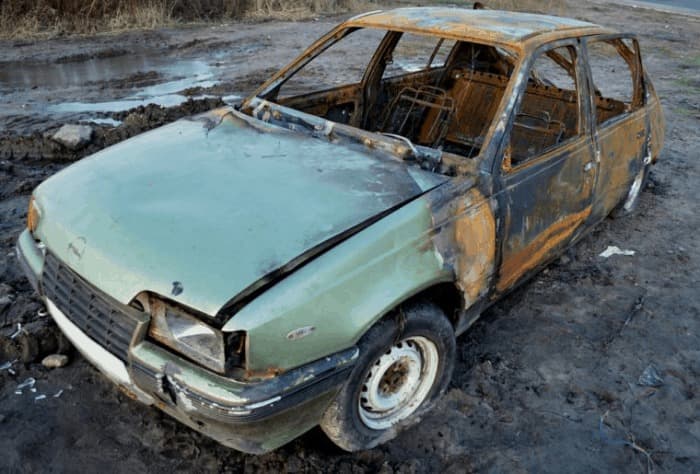Rust repair can seem like a daunting task, but it doesn’t have to be! With a little elbow grease and the right tools, you can easily eliminate corrosion damage from your car. In this blog post, we’ll show you how to quickly and easily remove rust from your car using a few simple household items. So if your car is starting to show signs of corrosion, don’t despair! With our handy tips, you can have it looking like new in no time.
- Rust is a serious problem for cars, and it can cause extensive damage if left unchecked.
- Fortunately, there are a few simple things you can do to repair rust damage yourself.
- Start by sanding away the rust using a coarse-grit sandpaper.
- If the rust is widespread, you may need to use a chemical rust remover.
- Once the rust is gone, apply a primer and paint to protect the metal from further corrosion.
- Conclusion
- Frequently Asked Questions
Rust is a serious problem for cars, and it can cause extensive damage if left unchecked.
Rust can be a treacherous adversary. Unchecked, it can rapidly spread and cause extensive damage to automobiles. Rust is formed when iron oxide begins to affect metal components that are subjected to moisture, oxygen, and other corrosive elements. In addition to its unsightly appearance, rust has the potential to weaken a car’s structural integrity and force owners to invest in costly repairs or replacement parts if left alone for too long. Therefore, all vehicle owners should prioritize inspecting their cars for any rust formation as soon as they spot signs of corrosion and take all necessary steps—from regular waxing and drying to hands-on scraping – to nip the problem in the bud before it’s too late.
Fortunately, there are a few simple things you can do to repair rust damage yourself.
Many drivers face corrosion damage to their vehicle in the form of rust. Although a mechanic may be able to help repair some forms of degradation, a few simple steps can be taken to combat this corroding force and ave a car from further damage. With a few everyday materials and some elbow grease, it is possible to repair rust on a variety of surfaces, including metal and plastic, making it a project suitable for any budget-conscious do-it-yourself homeowner. With a little dedication and patience, you can combat corrosion damage before it is too late and save your car from further devaluation.
Start by sanding away the rust using a coarse-grit sandpaper.

Save your car from corrosion damage with careful and deliberate sanding. Start off by taking a coarse-grit sandpaper, and use it to rub away rusty spots on the body of your car. This process takes time and care, but it is possible to restore much of the vehicle’s original luster. Once you have removed rust, apply a primer sealant on clean metal surfaces before adding paint coats chosen to match the manufacturer’s specifications of your car model. The protective finish will ensure that any new rust growth is prevented, keeping your car in excellent condition for many years to come.
If the rust is widespread, you may need to use a chemical rust remover.
Rust removers are specially formulated and designed to break down rust quickly and efficiently – allowing you to save time, effort, and money. However, take caution when using these products as they contain harsh chemicals which may corrode other surfaces – so it’s best to use protective gear like gloves and glasses when applying. Additionally, avoid contact with skin since it can irritate or cause other health results such as dizziness or skin irritation. Lastly, ensure you read all safety precautions carefully on the product label before beginning work.
Once the rust is gone, apply a primer and paint to protect the metal from further corrosion.
To ensure long-term metal corrosion protection, it is essential to properly prepare the surface and apply a primer and paint after removing the rust. The process begins with removing any existing oxidation, grease or other buildup on the metal surface.
Once this is complete, use an abrasive tool like a wire brush to remove any leftover rust particles. Before applying the protective primer and paint, be sure to thoroughly clean the surface of any dirt or debris that might still be present. Take your time to ensure that these preparatory steps are completed correctly; if not done right, the coating will not adhere properly and might peel away prematurely over time. Proper care now will save you from having to repeat these steps too often in future.
Conclusion
Rust damage can be a serious problem for your car, but with a little time and effort, you can easily repair it yourself. Just remember to sand away the rust, apply a primer and paint, and take care not to let the metal come into contact with water or moisture. With these simple steps, you’ll have your car looking good as new in no time!
Frequently Asked Questions about DIY rust repair
What is corrosion?
Corrosion is the process of chemical or electrochemical reaction that causes the gradual degradation of materials, usually metals. It is a natural process caused by exposure to the environment which can cause damage in the form of rust and other surface imperfections.
Generally speaking, corrosion rates are higher when temperatures are warmer and humidity levels are higher. Additionally, certain substances like salt water can accelerate corrosion due to their high electrolyte content.
What are the causes of corrosion?
Corrosion is caused by the gradual buildup of oxides on the surface of metals due to contact with oxygen, moisture, and other substances like salt water. The most common form of corrosion is rust, which is an iron oxide that forms when iron is exposed to water and oxygen. This process can be accelerated by high temperatures or an increase in humidity levels. Other less common forms of corrosion include oxidation of copper, aluminum, and stainless steel.
How does corrosion damage a car?
Rust and other forms of corrosion can damage a car in a number of ways. The most common form of corrosion, rust, can cause significant damage to a car’s bodywork and chassis. Over time, rust can eat away at the metal until it creates holes and weak spots that can eventually lead to catastrophic failure. Additionally, corrosion can also cause parts like the battery, brakes, and fuel system to fail prematurely. In extreme cases, corrosion can even lead to electrical shorts or fires. For this reason, it is essential to take steps to prevent corrosion from occurring in the first place by using proper maintenance and care procedures.
What are the signs of corrosion damage?
The signs of corrosion damage can vary depending on the type of metal being affected. Common signs of corrosion include discoloration, pitting, flaking, cracking, or bubbling on the surface of the metal. Rust is a particularly common form of corrosion that appears as an orange or reddish-brown coating that develops from iron and oxygen coming into contact with water and air.
How can I prevent corrosion damage to my car?
There are several ways to prevent corrosion damage to your car. The most important is to perform regular maintenance and care procedures, including washing and waxing the car regularly, using a corrosion-inhibiting spray or coating, and keeping the car covered or in a garage when not in use. Additionally, you can also take steps to reduce the risk of corrosion by avoiding exposure to harsh weather conditions and substances like salt water.


